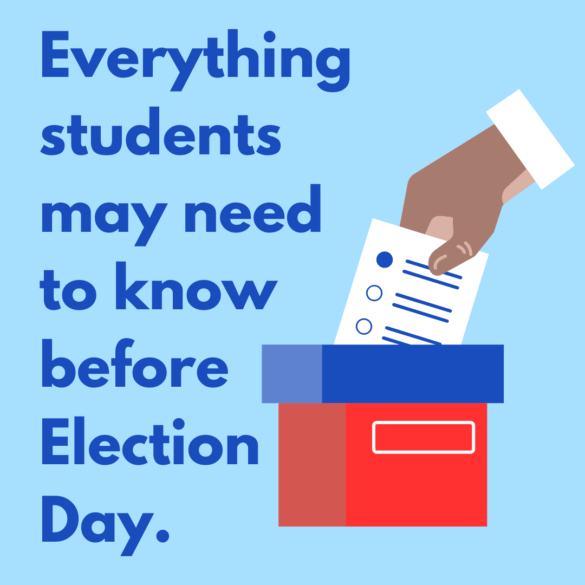Election Day takes place on Nov. 5. Here’s important information to know leading up to casting a ballot.
How to register to vote
A registered voter in the United States must be a U.S. citizen, 18 or older, and have residency for a specific amount of time in the state where they live. The residency requirement varies by state.
Must knows
- In Indiana, a potential voter must have lived at their current address for at least 30 days prior to the election.
- The voter registration deadline for the 2024 general election in Indiana is Oct. 7. This deadline applies whether registering in person, by mail, or online, according to Everything You Need to Vote – Vote.org.
- Absentee ballots
- Vote.org defines absentee ballots as ballots that voters can request if they are unable to physically attend their polling location on Election Day, allowing them to vote by mail.
- To request an absentee ballot, submit an application through the local board of elections. Once the application is approved, a ballot will be mailed to the address provided. Voters must fill it out and return it by mail to the designated return address.
Voting options and how to cast a ballot
When it comes to casting a ballot in November there are four main options.
- In-person voting requires voters to go to a designated polling location to cast a ballot. Polling places in Indiana are open from 6 a.m. to 6 p.m. on Election Day.
- Voters can also choose to vote early in person, starting 28 days before the election and ending at noon the day before Election Day, according to BallotReady.
- For voters living out of state, they can request an absentee ballot from their home state.
- Lastly, there is a mail-in ballot option for those in-state who meet the criteria for absentee voting according to VOTE411. In Indiana, absentee ballots are available to voters who meet specific requirements, such as being out of the county on Election Day, having a disability, or being 65 years of age or older. Once the absentee ballot is received, it can be filled out and mailed back to be counted by 6 p.m. on Election Day, according to VOTE411 and Rock the Vote.
What to expect on Election Day
Voters must bring a valid photo ID to their polling location. Acceptable forms of ID include an Indiana driver’s license, a state-issued ID, a U.S. passport, a military ID, or a student ID from a public institution in Indiana. The student ID must include a photo and a name matching the voter registration record, along with an expiration date that is current or expired after the last general election, according to VOTE411.
If a voter forgets their ID or their name is not on the voter list, they have the right to request a provisional ballot. Provisional ballots allow voters to cast their vote while election officials verify their eligibility after Election Day. In Indiana, officials will investigate whether voters are qualified and registered; if so, their provisional ballot will be counted, according to ACLU of Indiana.
Resources and source material for staying Informed
- Websites like Ballotpedia.org provide unbiased election coverage and information on candidates and issues.
- VOTE411.org offers voter education and tools to compare candidates and learn about ballot measures.
- For voter registration and election tools, visit Vote.org or usa.gov to check registration status, request an absentee ballot, or find polling locations.
- Additionally, Indiana voters can access local resources through Indianavoters.in.gov where they can find specific state information on voter registration deadlines, early voting locations, and election dates.
Contact Dillon Rosenlieb via email at dillon.rosenlieb@bsu.edu.
Sources: Vote.org, Indianavoters.in.gov, BallotReady, VOTE411, Rock the Vote, ACLU of Indiana




